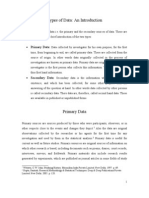Bitcoin Address Generation in Pure Python - OPSXCQ Blog
Uploaded by
Megan KosBitcoin Address Generation in Pure Python - OPSXCQ Blog
Uploaded by
Megan Kos[OPSXCQ Blog] # _
published on September 14, 2018
tags: cryptography eliptic curves bitcoin python
Bitcoin address generation
in pure python
Bitcoin address generation can be split in 4 steps listed
bellow:
Generating a secure private key.
Calculate the public key from the private key.
Encode the public key as a bitcoin address.
Encode the private key in the WIF format.
Step 1: Generate ECDSA Keypair
The very first step is to select a good and secure number,
for this example we won’t use one, instead we will simply
get the random from the system. An example why is important
a good and secure random number is written in this post
about cracking some bitcoin private keys, the bug isn’t
located in the key generation, but in the random used to
sign the transactions, but the point is the same, weak PRNG
(Pseudo-random number generators) can put everything in
risk.
Using this PRNG can be done with:
randomBytes = os.urandom(32)
Step 2: Calculate the public key
Since bitcoin uses spec256k1 the only thing that we need to
do is multiply it by the initial point in the curve by the
private key to obtain the public key.
Next step is to convert the key to a byte array and hash it,
first with SHA-256 then with RIPEMD-160. Then we prepend
the hashed public key with 0x00 if the target network is
the mainnet, if the address generated meant to be used in
the testnet 0x6f must be prepended.
SPEC256k1 = Point()
pk = int.from_bytes(privkey, "big")
hash160 = ripemd160(sha256((SPEC256k1 * pk).toBytes()))
address = b"\x00" + hash160
Checksum
Then the only thing left to add in the address it the
checksum, it is appended to the address and is the last 4
bytes of the double SHA-256 of the address calculated above.
address = b58(address + sha256(sha256(address))[:4])
Then just encode the key bytes to base58 and you have your
Bitcoin address !
Public key compression
When representing the public key as a number is possible to
compress it considering that the key is x and y in the
eliptic curve and since we have the equation, and given an
x value, there is only two values for y possible. So to
compress a public key, if y is odd, 0x03 is appended to
the x value, else, 0x02 is appended.
Step 4: Encode the private key
in the WIF format
To create a WIF () key from the private key bytes is far
simples than the previous steps, first prepend the byte
0x80 to the wif, then append the private key bytes. After,
append the checksum, that is the last 4 bytes of the double
SHA-256 of the partial wif key that we already have
calculated.
wif = b"\x80" + privkey
wif = b58(wif + sha256(sha256(wif))[:4])
return wif
Source code
This is a reference script, it depends on Python 3 to run
and is self contained, it means no external dependencies are
required to run it. One example of its output:
$ ./bitcoin-address-generator.py
Address: 18jJh1kSPJqbXtMB51SyczgcHL1drkDgxV
Privkey: 5JTEF3GHpDAin1caVqfznHU8T1jscHVVD5SMFALBTC4no2J4DqX
import os
import hashlib
def sha256(data):
digest = hashlib.new("sha256")
digest.update(data)
return digest.digest()
def ripemd160(x):
d = hashlib.new("ripemd160")
d.update(x)
return d.digest()
def b58(data):
B58 = "123456789ABCDEFGHJKLMNPQRSTUVWXYZabcdefghijkmnopqrstuvwxyz"
if data[0] == 0:
return "1" + b58(data[1:])
x = sum([v * (256 ** i) for i, v in enumerate(data[::-1])])
ret = ""
while x > 0:
ret = B58[x % 58] + ret
x = x // 58
return ret
class Point:
def __init__(self,
x=0x79BE667EF9DCBBAC55A06295CE870B07029BFCDB2DCE28D959F2815B16F81798,
y=0x483ADA7726A3C4655DA4FBFC0E1108A8FD17B448A68554199C47D08FFB10D4B8,
p=2**256 - 2**32 - 2**9 - 2**8 - 2**7 - 2**6 - 2**4 - 1):
self.x = x
self.y = y
self.p = p
def __add__(self, other):
return self.__radd__(other)
def __mul__(self, other):
return self.__rmul__(other)
def __rmul__(self, other):
n = self
q = None
for i in range(256):
if other & (1 << i):
q = q + n
n = n + n
return q
def __radd__(self, other):
if other is None:
return self
x1 = other.x
y1 = other.y
x2 = self.x
y2 = self.y
p = self.p
if self == other:
l = pow(2 * y2 % p, p-2, p) * (3 * x2 * x2) % p
else:
l = pow(x1 - x2, p-2, p) * (y1 - y2) % p
newX = (l ** 2 - x2 - x1) % p
newY = (l * x2 - l * newX - y2) % p
return Point(newX, newY)
def toBytes(self):
x = self.x.to_bytes(32, "big")
y = self.y.to_bytes(32, "big")
return b"\x04" + x + y
def getPublicKey(privkey):
SPEC256k1 = Point()
pk = int.from_bytes(privkey, "big")
hash160 = ripemd160(sha256((SPEC256k1 * pk).toBytes()))
address = b"\x00" + hash160
address = b58(address + sha256(sha256(address))[:4])
return address
def getWif(privkey):
wif = b"\x80" + privkey
wif = b58(wif + sha256(sha256(wif))[:4])
return wif
if __name__ == "__main__":
randomBytes = os.urandom(32)
print("Address: " + getPublicKey(randomBytes))
print("Privkey: " + getWif(randomBytes))
References
Eliptic curves in cryptography
Bitcoin Address documentation
© 2019 OPSXCQ Blog - CC BY 4.0
You might also like
- 1651 - Vo Nguyen Duy Nam - GCS200888 - Assignment Brief 2No ratings yet1651 - Vo Nguyen Duy Nam - GCS200888 - Assignment Brief 220 pages
- Aircraft Maintenance Manual Aircraft Maintenance Manual Aircraft Maintenance Manual Aircraft Maintenance ManualNo ratings yetAircraft Maintenance Manual Aircraft Maintenance Manual Aircraft Maintenance Manual Aircraft Maintenance Manual173 pages
- Bitcoin Wallet Recovery Backup Sheet - Mywallet-3104dcc4edc07290No ratings yetBitcoin Wallet Recovery Backup Sheet - Mywallet-3104dcc4edc072903 pages
- Bitcoin Wallet Recovery Backup Sheet - Mywallet-9604696fa765cfc6100% (1)Bitcoin Wallet Recovery Backup Sheet - Mywallet-9604696fa765cfc63 pages
- Bitcoin BTC Private Keys Active in 2018 2019txt0% (1)Bitcoin BTC Private Keys Active in 2018 2019txt1 page
- Bitcoin BTC Private Keys Active in 2018 2019txt CompressNo ratings yetBitcoin BTC Private Keys Active in 2018 2019txt Compress1 page
- Your Address: 0X734C27Af Your Private KeyNo ratings yetYour Address: 0X734C27Af Your Private Key1 page
- Address 3Q4mHmxF3zmAY5TDNkVQGGghswtdn3S5ZH Blockchain ExplorerNo ratings yetAddress 3Q4mHmxF3zmAY5TDNkVQGGghswtdn3S5ZH Blockchain Explorer1 page
- BTC Bitcoin Wallet Recovery Backup Sheet - Mywallet-36De7a70a4c8Cce7No ratings yetBTC Bitcoin Wallet Recovery Backup Sheet - Mywallet-36De7a70a4c8Cce73 pages
- Bitcoin Wallet Recovery Backup Sheet - Mywallet-6673341ac5d043ff100% (1)Bitcoin Wallet Recovery Backup Sheet - Mywallet-6673341ac5d043ff3 pages
- TRC20 Decentralized USD TRON - Balance - Log - TRXXNo ratings yetTRC20 Decentralized USD TRON - Balance - Log - TRXX4 pages
- Private Key Encryption and Recovery in Blockchain: July 2019No ratings yetPrivate Key Encryption and Recovery in Blockchain: July 201923 pages
- Your Address: 0xE0B38705 Your Private KeyNo ratings yetYour Address: 0xE0B38705 Your Private Key1 page
- Toaz - Info Blockchain Unconfirmed Transaction Hack Free Script PRNo ratings yetToaz - Info Blockchain Unconfirmed Transaction Hack Free Script PR5 pages
- 3795-210-S10-E99-0002-Rev.3 PLC Io Mapping List Including Time Synchronize SNo ratings yet3795-210-S10-E99-0002-Rev.3 PLC Io Mapping List Including Time Synchronize S7 pages
- Data Sheet - NAD T 763 AV Surround Sound ReceiverNo ratings yetData Sheet - NAD T 763 AV Surround Sound Receiver4 pages
- A Source Book From The Open Group: This Is An Extract FromNo ratings yetA Source Book From The Open Group: This Is An Extract From50 pages
- Bossard - Whitepaper - Fastening Solutions For Composite and Plastic Materials - EN - 04-2021No ratings yetBossard - Whitepaper - Fastening Solutions For Composite and Plastic Materials - EN - 04-202127 pages
- Candidate Evaluation Details: Hidayath Ali MokulaNo ratings yetCandidate Evaluation Details: Hidayath Ali Mokula2 pages
- Point of Sale (POS) Data From A Supermarket: Transactions and Cashier OperationsNo ratings yetPoint of Sale (POS) Data From A Supermarket: Transactions and Cashier Operations4 pages
- 01.4ib.50024 Powlvac® Pvam Type M Ground & Test Device Manually OperatedNo ratings yet01.4ib.50024 Powlvac® Pvam Type M Ground & Test Device Manually Operated21 pages

























































































